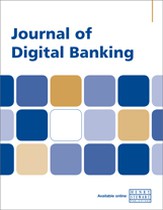How the instant payment central infrastructure can be a payment solution at the same time — the Hungarian example
Abstract
Instant payments are among the strongest growing technologies in the payment industry. Current trends and regulations indicate that instant payments will be ubiquitous in the coming years. That provides a solid foundation for a payment method leveraging modern technologies such as internet and smartphones. Instant payments, however, have not yet been used in all possible payment situations. Country-level projects implement the instant payments central infrastructure for interbank processing. All the existing solutions based on these infrastructures focus on a limited set of payment situations, using different technologies in different situations, thereby resulting in a diverse user experience. This paper is based on the results of the research and development project executed by Capsys Informatics Ltd. The approach of the research was to thoroughly analyse possibilities and find an optimal solution covering the most possible payment situations. First, it analyses what criteria a viable payment solution must meet: easy to use, cheap, fast, reliable, secure and widespread. The discussion examines in depth the three data transmission technologies that are most commonly used with smartphones (near field communication (NFC), quick response (QR) code and deep link), explaining how they serve user experience and how these three can be united into a unified data entry (UDE) method. The results of the research are summarised into an ecosystem blueprint (Capsys Smart Payment Solution). The project called ‘Instant Payment 2.0’ launched by the National Bank of Hungary (MNB) is a unique initiative. It will result in an instant payment-based payment solution, using NFC, QR code and deep link data transmission technologies in a unified manner, covering multiple payment situations, mandating the banks to implement the solution in their mobile banking application. ‘qvik’ (as MNB has branded this solution) has all the potential to become the next big thing in payments in Hungary.
The full article is available to subscribers to the journal.
Author's Biography
Róbert Kiszely graduated in Computer Science from Eotvos Lorand Science University and was hired as the first Capsys employee in 1998. Over the past 26 years he has gained experience in several fields in banking and financial IT: expert consultancy, development, implementation and support of securities settlement, pension fund administration and payment systems. Róbert has successfully led several domestic and international projects. As director of professional services, he runs the professional support of Capsys’ international partnership programme, focusing on Immediate Payments and PSD2/ Open Banking. Róbert has been recognised as one of the leading experts of Immediate Payments and PSD2/Open Banking in Hungary, having spoken at numerous conferences on these topics. Over the last three years he has led the architectural design and subsequent implementation of two major immediate payment implementations in Hungary.
József Czimer started his career with the National Bank of Hungary, working in international money market operations and later in the regulatory department. While still serving as a regulator, he started to deal with bank card operations. Later, as a deputy CEO of the new IBUSZ Bank, József managed the country’s then largest card activity. Having an innovative bent of mind, he started to deal with e-money operations. József contributed his expertise to the working out of the European E-money Directive as well. In 2013 he moved to London, where he later set up the Capsys London office, where he is currently the manager responsible for instant payment services professionally and also for European partner relationships. József is also a member of two European Payment Association commissions.
Máté Biró-Lebovits began his career in the Custody Back Office department at Raiffeisen Bank, where he held a variety of successive roles over the years. He continued his career in the investment world at Budapest Fund Management, where he was later appointed as Head of Back Office. Following this, Máté joined the investment product management department at K&H Bank, dealing with MiFID II compliance and innovative investment products. In 2020, he joined Capsys as a project manager, where he immediately developed a passion for various payment solutions and instant payments. Later, he led the R&D project referenced in the paper. Shortly after the completion of the project, Máté joined the Sales team.
